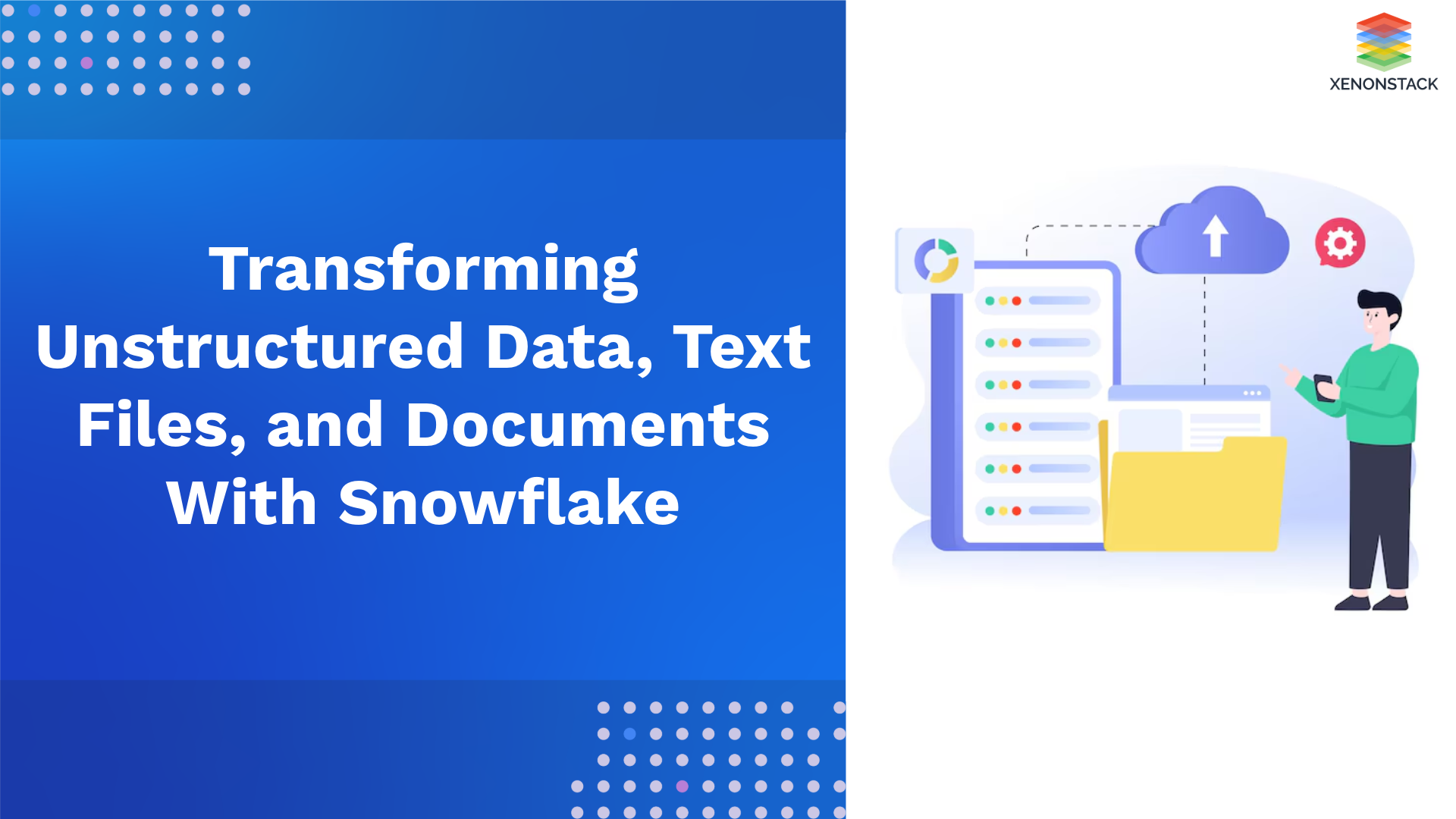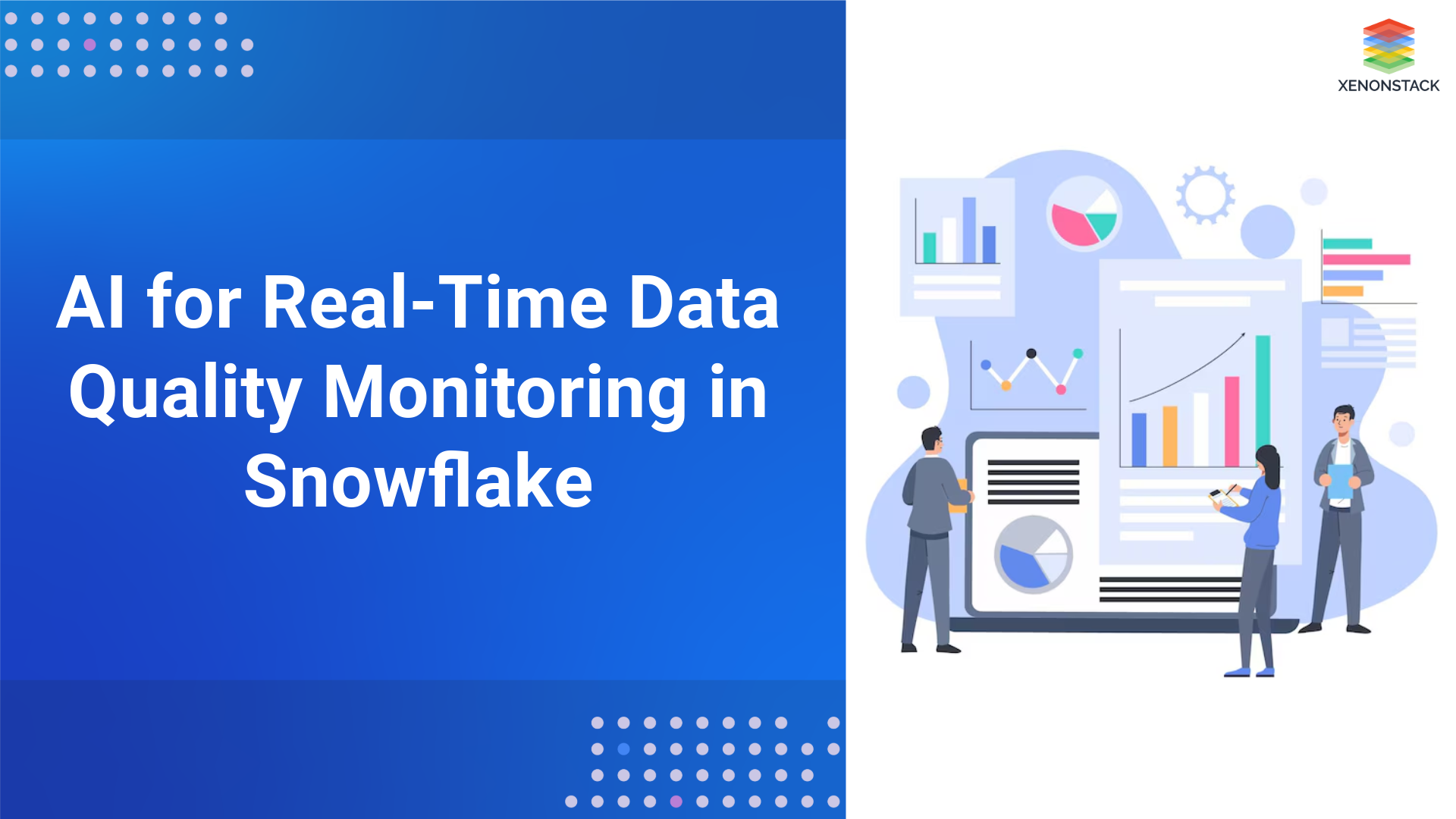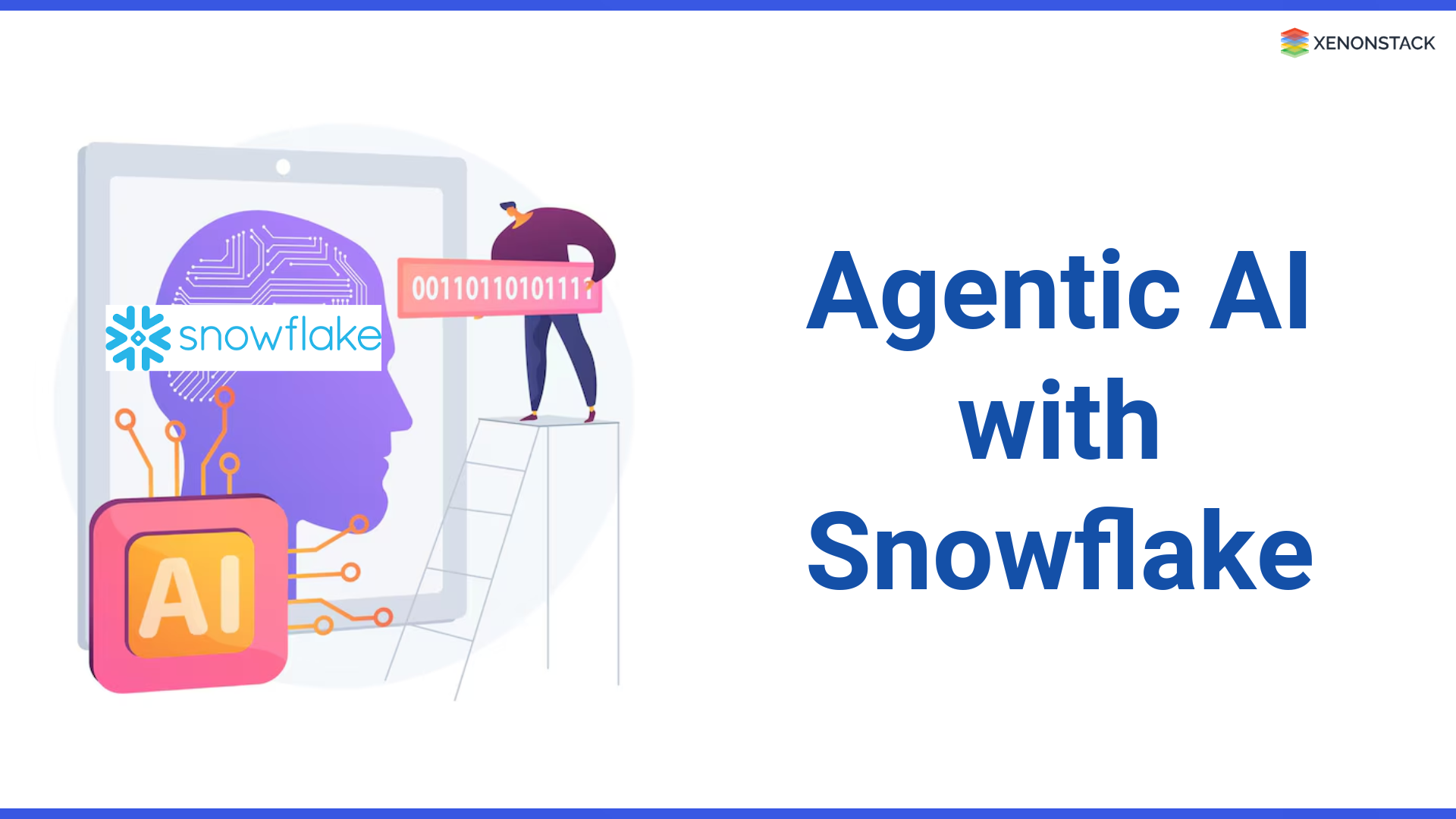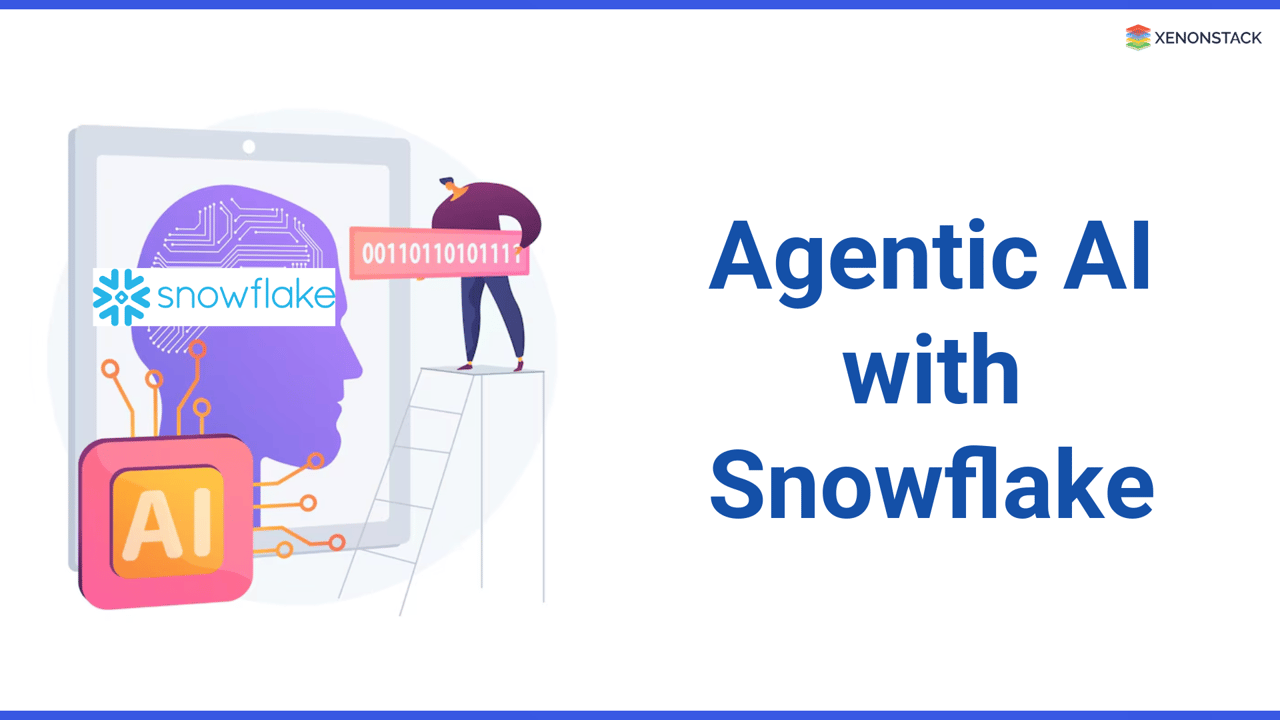
The convergence of Agentic AI and Snowflake ushers in a new era of autonomous decision-making and process automation. Agentic AI's ability to act autonomously based on intelligent decision-making algorithms, combined with Snowflake’s robust data platform, unlocks transformative possibilities for enterprises. This blog explores how these technologies integrate, from architecture to implementation, offering a comprehensive guide on leveraging them effectively.
Overview of Agentic AI
Agentic AI refers to AI systems that not only analyze data but also autonomously make decisions and take actions based on that analysis. These systems are capable of executing predefined or adaptive tasks in real-time with minimal human intervention. Unlike traditional AI models that merely generate outputs, agentic AI models act on these outputs to automate processes, making decisions that optimize performance across a wide variety of tasks.
The core of Agentic AI lies in decision intelligence, which involves the use of AI agents that can perceive, analyze, and autonomously act in dynamic environments. Advanced technologies like reinforcement learning, autonomous decision-making frameworks, and adaptive algorithms power this.
Snowflake's Agentic AI: Cortex Agents
Snowflake's Cortex Agents is a managed service that enables developers to build agentic AI applications that can autonomously perform tasks, analyze data, and make decisions. These agents leverage both structured and unstructured data within the Snowflake platform, empowering organizations to build intelligent, self-operating systems.
How It Works:
 Fig 1: Snowflake For Agentic AI
Fig 1: Snowflake For Agentic AI
Cortex Agents use a combination of an enterprise's proprietary data and large language models (LLMs) to understand the business context and decision-making needs of the organization. These agents can be trained to act autonomously, surfacing insights and taking on specific tasks. They can parse requests, analyze both unstructured and structured data, ask for clarification, and determine next steps within a given application.
Snowflake for Agentic AI and Machine Learning
Snowflake has evolved from a cloud data warehouse into a comprehensive platform that plays a crucial role in the agentic AI ecosystem. As organizations race to implement agentic AI solutions, they face a challenge: effectively managing the massive datasets required for training and deploying intelligent agents.
Snowflake addresses this challenge by providing a central repository where data from multiple sources can be unified, processed, and made available for AI workloads. Its architecture enables seamless data sharing across organizational boundaries, ensuring that AI initiatives have access to the most up-to-date information.
With Snowpark, Snowflake has expanded its capabilities to support the entire agentic AI lifecycle—from data preparation and feature engineering to model deployment, monitoring, and continuous adaptation.
Snowflake’s Architecture and Capabilities:
Snowflake's architecture is optimized to support agentic AI workloads, providing a scalable, flexible platform for the deployment and operation of autonomous systems. Snowflake's multi-cluster architecture separates storage from computing, allowing organizations to scale both independently depending on their specific requirements.
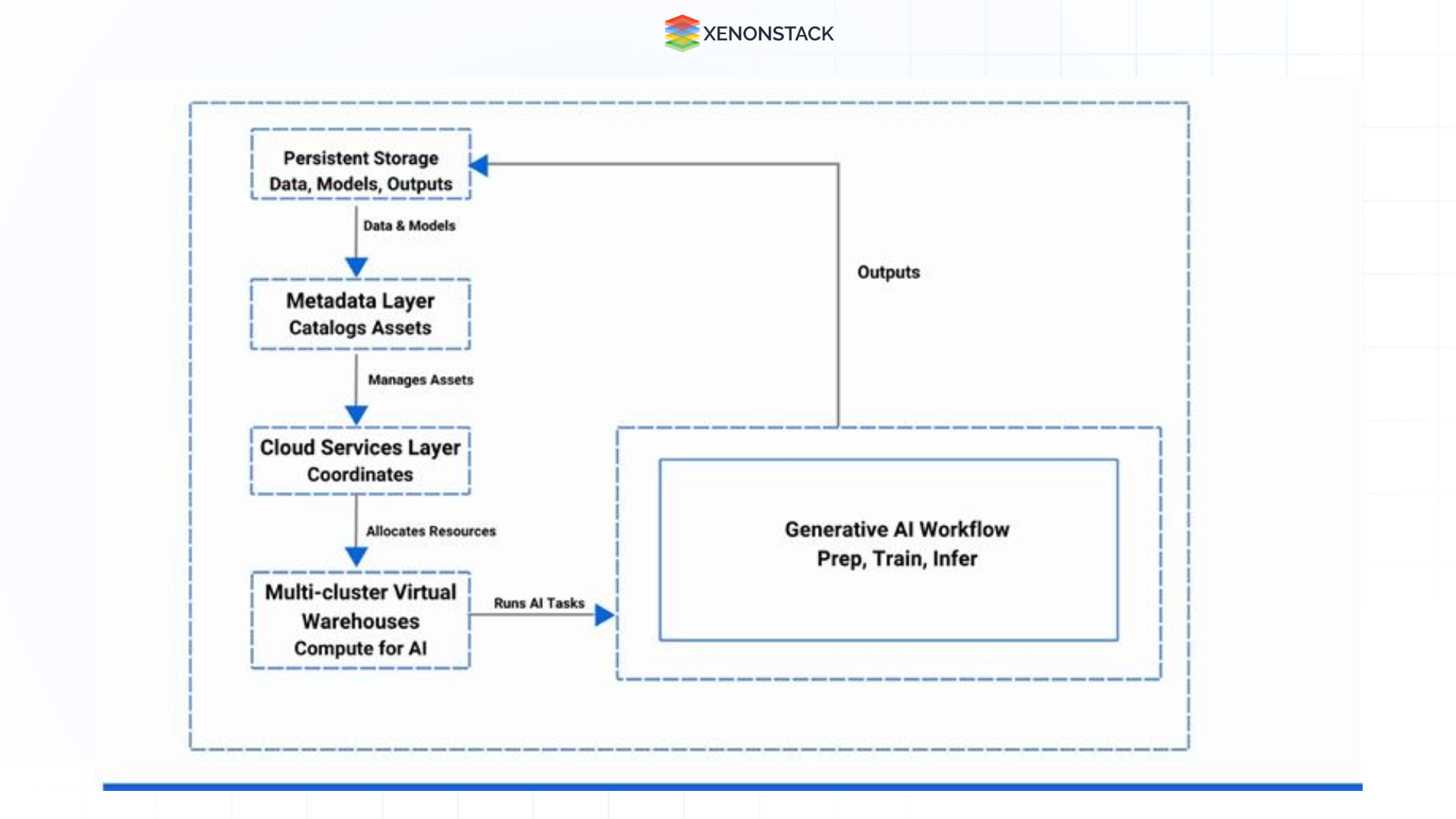 Fig 2: Snowflake’s Architecture and Capabilities
Fig 2: Snowflake’s Architecture and Capabilities
Key architectural elements include:
-
Multi-cluster Virtual Warehouses: Resources tailored to handle specific agentic AI tasks, enabling real-time decision-making and task automation.
-
Metadata Layer: Manages and catalogues assets such as decision models, features, and actions.
-
Cloud Services Layer: Coordinates operations to optimize resource allocation for autonomous system tasks.
-
Persistent Storage: Securely stores model data, decision logs, and agent actions for auditing and retraining.
These capabilities are further enhanced by Snowflake’s ability to process structured, semi-structured, and unstructured data, ensuring that agentic AI systems can act on diverse data sources.
Integration with Agentic AI and ML Frameworks
Snowflake seamlessly integrates with popular frameworks like TensorFlow, PyTorch, and Scikit-learn via Snowpark, its developer framework. Snowpark enables data scientists to use familiar tools like TensorFlow and PyTorch directly in Snowflake, writing Python or Scala code to process data and build models without external data transfers.
It also connects with cloud-native AI services (e.g., AWS SageMaker, Azure ML) and external APIs: Snowflake links to AWS SageMaker, Azure ML, and external APIs, allowing users to train models on cloud platforms or call third-party AI services while keeping data secure in Snowflake.
Making it a flexible hub for AI development: Snowflake’s integrations create a versatile environment, supporting diverse AI tools and workflows, from open-source frameworks to cloud services, making it a central hub for innovative AI development projects.
How Snowflake Supports Agentic AI Workloads
Snowflake’s platform is designed to support the complexities of agentic AI workloads by centralizing data, offering scalable resources, and enabling seamless integration with AI frameworks. This empowers developers to build autonomous decision-making systems that can adapt and act in real-time.
-
Real-time Data Processing: Enables dynamic decision-making by processing live data streams, ensuring that agentic AI systems make decisions based on up-to-the-minute data.
-
Scalable Compute Resources: The platform allows scaling compute resources according to the workload, supporting high-throughput decision-making and real-time inference needed for agentic AI applications.
-
Seamless Integration with AI Frameworks: Connects effortlessly with popular AI frameworks like TensorFlow, PyTorch, and other agent-based models, enabling the creation of end-to-end decision-making pipelines for AI agents.
-
Unified Data Platform: Centralizes structured, semi-structured, and unstructured data, ensuring AI agents have access to comprehensive datasets, improving decision-making accuracy and adaptability.
-
Automated Data Sharing and Collaboration: Facilitates easy access to data across teams, organizations, or external partners, enhancing collaboration and enabling AI agents to operate across various data environments with data security and compliance.
Seamless AI Model Evaluation for Reliability and Performance
Building Agentic AI Models with Snowflake
Data Preparation in Snowflake
-
Data Ingestion and Transformation: Snowflake ingests data via Snowpipe (real-time) or batch uploads from sources like S3 or Azure Blob. SQL transformations (e.g., joins, aggregations) prepare raw data for agentic AI decision-making processes.
-
Feature Engineering with Snowflake: Leverage SQL and Snowpark for feature extraction—e.g., creating embeddings from text or normalizing numerical data—directly within Snowflake, enabling agentic AI agents to understand and interpret data autonomously.
-
Handling Large-Scale Datasets: Snowflake’s scalability shines here. Use partitioned tables and clustered keys to manage terabytes of data, ensuring efficient queries for training agentic AI models to autonomously process and act on large datasets.
Using Snowpark for Agentic AI Development
Snowpark represents a paradigm shift in how agentic AI workloads are executed within Snowflake. It brings computation closer to the data by enabling developers to write code in familiar languages like Python, Java, and Scala that execute directly within Snowflake's environment, creating AI agents that can autonomously perform tasks, analyze data, and make decisions.
For agentic AI specifically, Snowpark provides:
-
DataFrame API: A programmatic interface for data manipulation that aligns with common AI/ML frameworks, enabling AI agents to interact with structured, semi-structured, and unstructured data autonomously.
-
User-Defined Functions (UDFs): The ability to package custom logic, including decision-making and model inference code, for execution within Snowflake, empowering agents to act based on real-time data autonomously.
-
Stored Procedures: Support for complex AI workflows that combine data processing and autonomous model operations for task automation.
-
Vectorized UDFs: Optimized daily processing for the mathematical operations in agentic AI models, enabling faster decision-making and action-taking.
-
Snowpark for Python: This is particularly significant for agentic AI, as it allows data scientists to use popular libraries like PyTorch, TensorFlow, and Hugging Face directly within Snowflake, facilitating the creation of autonomous agents capable of making data-driven decisions.
Agentic AI Model Training and Inference
-
Training Agentic AI Models Using Snowpark: Snowpark enables in-platform training with Python, allowing for the creation and fine-tuning of agentic AI models that learn from data and adapt to make autonomous decisions based on real-time input.
-
Leveraging Snowflake's Compute Resource: Scale warehouses dynamically—small for preprocessing, large for training—to optimize performance and cost while ensuring agentic AI agents are trained efficiently. Snowflake’s auto-suspend feature reduces idle expenses, ensuring that AI agents are only running when necessary.
-
Deploying Agentic AI Models in Snowflake: Deploy models as UDFs for SQL-based inference or store them in stages for external calls, giving agentic AI systems the flexibility to take actions based on evolving real-time data.
Running Inference and Generating Outputs
-
Batch vs. Real-Time Inference:
-
Batch inference processes large datasets (e.g., generating personalized product recommendations) using scheduled queries.
-
Real-time inference, powered by Snowpipe and UDFs, handles dynamic inputs like live customer queries, enabling AI agents to respond instantly to new data and evolving situations.
-
-
Optimizing Query Performance for AI Workloads: Use clustering keys, materialized views, and warehouse sizing to speed up inference queries. Caching frequent results also reduces compute load, ensuring agentic AI models can operate efficiently and respond quickly.
Using Snowflake for Scalable Agentic AI Predictions
Snowflake’s multi-cluster architecture ensures predictions scale with demand, supporting thousands of concurrent agentic AI requests without bottlenecks. This flexibility is critical for agentic AI applications that require constant, uninterrupted access to large datasets and real-time decision-making capabilities.
Weird insights.
Integrating Snowflake with Agentic AI Ecosystems
Connecting with AWS, Azure, and GCP AI Services
Snowflake’s multi-cloud support integrates with AWS, Azure, and GCP AI tools, enabling seamless use of their AI capabilities while keeping data secure and centralized in Snowflake.
Snowflake ensures that data remains protected and governed, even as it powers agentic AI tasks on AWS, Azure, or GCP platforms, ensuring autonomous operations across different ecosystems.
Real-World Use Cases of Snowflake for Agentic AI
-
Personalized Recommendations: Retailers use Snowflake to unify customer data and power agentic AI models that autonomously craft tailored product suggestions, boosting engagement and sales.
-
Automated Content Generation: Media companies leverage Snowflake’s data lake capabilities to feed agentic AI models, autonomously generating articles, social media posts, or video scripts at scale.
-
Fraud Detection and Anomaly Detection: Financial institutions combine Snowflake’s real-time data processing with agentic AI to detect unusual patterns and flag fraud before it escalates.
Security and Governance in Agentic AI with Snowflake
-
Data Privacy and Compliance: Snowflake ensures GDPR, CCPA, and HIPAA compliance with encryption, data masking, and fine-grained access controls, critical for agentic AI projects handling sensitive data.
-
Access Control and Role-Based Security: Role-based access control (RBAC) lets you restrict who can train, deploy, or query agentic AI models, safeguarding intellectual property and customer data.
-
Monitoring and Auditing AI Models: Snowflake’s audit logs track data access and model usage, ensuring transparency and accountability in agentic AI operations.
Future of Agentic AI with Snowflake
-
Trends and Innovations: Agentic AI is evolving towards multimodal models (text + image) and greater energy efficiency. Snowflake is poised to support these advancements with enhanced computing and data handling, allowing AI agents to operate with minimal human intervention.
-
Upcoming Features in Snowflake for Agentic AI: In 2025 and beyond, expect more profound Snowpark enhancements, native ML model hosting, and tighter integrations with generative AI frameworks, making it easier for businesses to implement agentic AI solutions.
-
The Role of AI in Data-Driven Decision-Making: AI, powered by platforms like Snowflake, will shift organizations from reactive analytics to proactive, predictive strategies—unlocking unprecedented value through autonomous AI decision-making.
Snowflake provides a robust and scalable platform for efficiently executing agentic AI models. With its advanced computing capabilities, seamless integrations, and strong security framework, Snowflake is an ideal choice for businesses looking to implement AI-driven, autonomous solutions. By leveraging Snowflake’s architecture, organizations can accelerate agentic AI development, improve predictive analytics, and drive innovation through autonomous AI-powered insights.
Next Steps in Agentic AI with Snowflake
Talk to our experts about implementing Agentic AI with Snowflake, how industries and different departments use Agentic Workflows and Decision Intelligence to become decision-centric. This powerful combination utilizes AI to automate and optimize IT support and operations, improving efficiency and responsiveness

